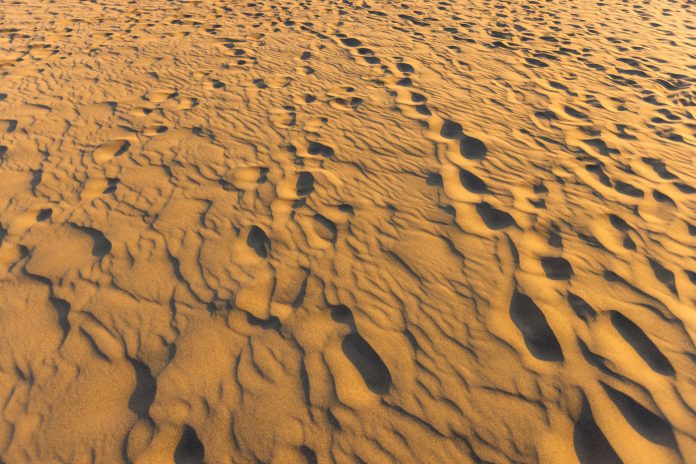Researchers from Ben-Gurion University of the Negev and collaborators from Denmark, Germany, Italy, China, and the US have challenged conventional ideas by proposing a suitable theory explaining the formation of sand ripples on both Mars and Earth
Despite their seemingly simple appearance of sand ripples, the underlying processes controlling their formation have remained debated.
What are the sand ripples on Mars?
It was widely believed that the distinct sand ripples observed on Mars, as captured by NASA’s Curiosity rover, differed from those found on Earth.
The general theory suggested that while the impact mechanism of wind-blown particles created smaller ripples on Mars, larger ripples were formed through hydrodynamic instability, similar to ripples found underwater on Earth.
However, Professors Hezi Yizhaq and Itzhak Katra, leading the international research team, have cracked this paradigm through experiments conducted at Ben-Gurion University’s wind tunnel and Aarhus University’s Mars tunnel.
Replicating Martian sand conditions to draw a conclusion
The breakthrough came when the team successfully replicated Martian sand conditions using tiny glass balls representing the fine grains of sand found on the Red Planet.
This adjustment allowed them to simulate Martian wind processes on Earth and observe large-scale and impact ripple formation, mirroring those observed on Mars.
“There is much more research, both fieldwork and experimentally, needed to prove our theory, but it is amazing to propose something so radically new in a field I have been studying for over 20 years. It is exciting to go out and try to find on Earth what can clearly be seen on Mars,” says Prof.
The link between Mars and Earth
Central to their findings is the proposal of a unified theoretical framework that reconciles the formation mechanisms of sand ripples on Mars and Earth. At its core, the theory shows that sand ripples shaped by Martian winds resemble those sculpted by water currents on Earth, challenging traditional limitations between terrestrial and extraterrestrial geomorphological processes.
The research, generously supported by institutions including the Israel Science Foundation, the German-Israel Foundation for Scientific Research and Development (GIF), and the National Natural Science Foundation of China, underscores the collaborative nature of scientific inquiry transcending geographical and disciplinary boundaries.
Editor's Recommended Articles
-
Must Read >> Uncovering the origin of Mars’ biggest seismic event














